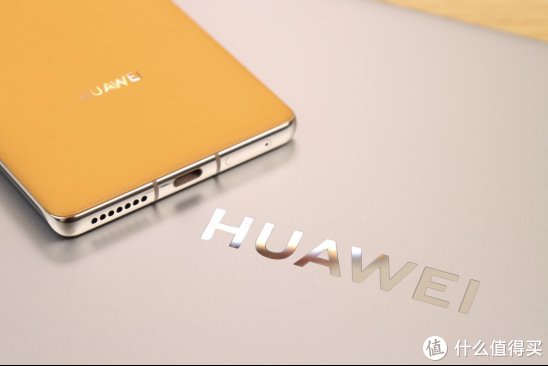Android|Android BindServiceдҪҝз”ЁжЎҲдҫӢи®Іи§Ј
жңҖиҝ‘еӯҰд№ дәҶдёҖдёӢAndroidйҮҢйқўзҡ„Serviceзҡ„еә”з”ЁпјҢеңЁBindServiceйғЁеҲҶе°ҸеҚЎдәҶдёҖдёӢпјҢдё»иҰҒжҳҜејҖе§ӢжІЎжңүеҪ»еә•зҗҶи§Јдёәд»Җд№ҲиҰҒиҝҷд№Ҳе®һзҺ°гҖӮ
BindServiceе’ҢStarted ServiceйғҪжҳҜServiceпјҢжңүд»Җд№Ҳең°ж–№дёҚдёҖж ·е‘ўпјҡ
- 1. Started ServiceдёӯдҪҝз”ЁStartServiceпјҲпјүж–№жі•жқҘиҝӣиЎҢж–№жі•зҡ„и°ғз”ЁпјҢи°ғз”ЁиҖ…е’ҢжңҚеҠЎд№Ӣй—ҙжІЎжңүиҒ”зі»пјҢеҚідҪҝи°ғз”ЁиҖ…йҖҖеҮәдәҶпјҢжңҚеҠЎдҫқ然еңЁиҝӣиЎҢгҖҗonCreate()->onStartCommand()->startService()->onDestroy()гҖ‘пјҢжіЁж„Ҹе…¶дёӯжІЎжңүonStart()пјҢдё»иҰҒжҳҜиў«onStartCommand()ж–№жі•з»ҷеҸ–д»ЈдәҶпјҢonStartж–№жі•дёҚжҺЁиҚҗдҪҝз”ЁдәҶгҖӮ
- 2. BindServiceдёӯдҪҝз”ЁbindService()ж–№жі•жқҘз»‘е®ҡжңҚеҠЎпјҢи°ғз”ЁиҖ…е’Ңз»‘е®ҡиҖ…з»‘еңЁдёҖиө·пјҢи°ғз”ЁиҖ…дёҖж—ҰйҖҖеҮәжңҚеҠЎд№ҹе°ұз»ҲжӯўдәҶгҖҗonCreate()->onBind()->onUnbind()->onDestroy()гҖ‘гҖӮ
package com.zys.service; import com.zys.service.BindService.MyBinder; import android.R.bool; import android.app.Activity; import android.content.ComponentName; import android.content.Context; import android.content.Intent; import android.content.ServiceConnection; import android.os.Bundle; import android.os.IBinder; import android.view.View; import android.view.View.OnClickListener; import android.widget.Button; public class MainActivity extends Activity {private Button startBtn; private Button stopBtn; private boolean flag; /** Called when the activity is first created. */@Overridepublic void onCreate(Bundle savedInstanceState) {super.onCreate(savedInstanceState); setContentView(R.layout.main); flag = false; //и®ҫзҪ®startBtn = (Button)this.findViewById(R.id.startBtn); stopBtn = (Button)this.findViewById(R.id.stopBtn); startBtn.setOnClickListener(listener); stopBtn.setOnClickListener(listener); }private OnClickListener listener = new OnClickListener() {@Overridepublic void onClick(View v) {// TODO Auto-generated method stubswitch (v.getId()) {case R.id.startBtn:bindService(); break; case R.id.stopBtn:unBind(); break; default:break; }}}; private void bindService(){Intent intent = new Intent(MainActivity.this,BindService.class); bindService(intent, conn, Context.BIND_AUTO_CREATE); }private void unBind(){if(flag == true){unbindService(conn); flag = false; }}private ServiceConnection conn = new ServiceConnection() {@Overridepublic void onServiceDisconnected(ComponentName name) {// TODO Auto-generated method stub}@Overridepublic void onServiceConnected(ComponentName name, IBinder service) {// TODO Auto-generated method stubMyBinder binder = (MyBinder)service; BindService bindService = binder.getService(); bindService.MyMethod(); flag = true; }}; }
жңҚеҠЎBindService
package com.zys.service; import java.io.FileDescriptor; import android.app.Service; import android.content.Intent; import android.os.Binder; import android.os.IBinder; import android.os.IInterface; import android.os.Parcel; import android.os.RemoteException; import android.util.Log; public class BindService extends Service {private static final String TAG = "BindService"; public void MyMethod(){Log.i(TAG, "BindService-->MyMethod()"); }@Overridepublic IBinder onBind(Intent intent) {// TODO Auto-generated method stubreturn myBinder; }public class MyBinder extends Binder{public BindService getService(){return BindService.this; }}private MyBinder myBinder = new MyBinder(); }
з”ұдәҺAndroid дёӯзҡ„ServiceдҪҝз”ЁдәҶonBind зҡ„ж–№жі•еҺ»з»‘е®ҡжңҚеҠЎпјҢиҝ”еӣһдёҖдёӘIbinderеҜ№иұЎиҝӣиЎҢж“ҚдҪңпјҢиҖҢжҲ‘们иҰҒиҺ·еҸ–е…·дҪ“зҡ„Serviceж–№жі•зҡ„еҶ…е®№зҡ„ж—¶еҖҷпјҢжҲ‘们йңҖиҰҒIbinderеҜ№иұЎиҝ”еӣһе…·дҪ“зҡ„ServiceеҜ№иұЎжүҚиғҪж“ҚдҪңпјҢжүҖд»ҘиҜҙе…·дҪ“зҡ„ServiceеҜ№иұЎеҝ…йЎ»йҰ–е…Ҳе®һзҺ°BinderеҜ№иұЎпјҢиҝҷдёӘж ·еӯҗзҡ„иҜқжҲ‘们жүҚиғҪеҲ©з”ЁbindServiceзҡ„ж–№жі•еҜ№ServiceиҝӣиЎҢз»‘е®ҡпјҢиҺ·еҸ–BinderеҜ№иұЎд№ӢеҗҺиҺ·еҸ–е…·дҪ“зҡ„ServiceеҜ№иұЎпјҢ然еҗҺжүҚиҺ·еҸ–Serviceдёӯзҡ„ж–№жі•зӯүзӯүгҖӮжүҖд»ҘжҲ‘们йңҖиҰҒжіЁж„Ҹзҡ„жҳҜbindServiceзҡ„ж–№ејҸеҺ»з»‘е®ҡжңҚеҠЎиҺ·еҸ–зҡ„еҝ…е®ҡжҳҜе®һзҺ°дәҶBinderзҡ„еҜ№иұЎпјҢжүҖд»ҘиҝҷжҳҜжҲ‘们еҝ…йЎ»дҪҝз”ЁBinderзҡ„ж–№ејҸеҺ»иҺ·еҸ–Serviceзҡ„ж–№ејҸиҖҢдёҚжҳҜзӣҙжҺҘдҪҝз”ЁServiceзҡ„зұ»пјҢиҝҷдёӘжҳҜAndroidеҶ…йғЁе®һзҺ°жүҖзәҰжқҹзҡ„гҖӮ
гҖҗAndroid|Android BindServiceдҪҝз”ЁжЎҲдҫӢи®Іи§ЈгҖ‘ж–№жі•иҝҮзЁӢеҰӮдёӢпјҡ
Intent intent = new Intent(MainActivity.this,BindService.class)->ж–°е»әдәҶBindServiceеҜ№иұЎ->ж–°е»әдәҶMyBinderеҜ№иұЎ
->bindService(intent, conn, Context.BIND_AUTO_CREATE); ->onBind()еҮҪж•°-----дј йҖ’MyBinderеҜ№иұЎ------->onServiceConnectedпјҲпјү
--> йҖҡиҝҮдј йҖ’зҡ„BinderеҜ№иұЎиҺ·еҸ–еҲҡеҲҡе’ҢBinderеҜ№иұЎеҜ№еә”зҡ„BindService еҜ№иұЎ-->и°ғз”ЁServiceдёӯе®ҡд№үзҡ„ж–№жі•гҖӮ
иҝҷдёӘе…¶дёӯеҝ…йЎ»йҖҡиҝҮBinderеҜ№иұЎпјҢеӣ дёәжҳҜйҖҡиҝҮBinderеҜ№иұЎжқҘдј йҖ’зҡ„пјҢйҖҡиҝҮBinderеҜ№иұЎиҺ·еҸ–ServiceеҜ№иұЎпјҢ然еҗҺиҺ·еҸ–жүҖйңҖзҡ„жңҚеҠЎпјҢжүҖд»ҘServiceеҝ…йЎ»е®һзҺ°BinderпјҢд»Ҙдҫҝдј йҖ’е’ҢдҪҝз”ЁгҖӮ
еҲ°жӯӨиҝҷзҜҮе…ідәҺAndroid BindServiceдҪҝз”ЁжЎҲдҫӢи®Іи§Јзҡ„ж–Үз« е°ұд»Ӣз»ҚеҲ°иҝҷдәҶ,жӣҙеӨҡзӣёе…іAndroid BindServiceдҪҝз”ЁеҶ…е®№иҜ·жҗңзҙўи„ҡжң¬д№Ӣ家д»ҘеүҚзҡ„ж–Үз« жҲ–继з»ӯжөҸи§ҲдёӢйқўзҡ„зӣёе…іж–Үз« еёҢжңӣеӨ§е®¶д»ҘеҗҺеӨҡеӨҡж”ҜжҢҒи„ҡжң¬д№Ӣ家пјҒ
жҺЁиҚҗйҳ…иҜ»
- android第дёүж–№жЎҶжһ¶пјҲдә”пјүButterKnife
- з”ұжө…е…Ҙж·ұзҗҶи§ЈAOP
- гҖҗиҜ‘гҖ‘20дёӘжӣҙжңүж•Ҳең°дҪҝз”Ёи°·жӯҢжҗңзҙўзҡ„жҠҖе·§
- mybatisplusеҰӮдҪ•еңЁxmlзҡ„иҝһиЎЁжҹҘиҜўдёӯдҪҝз”ЁqueryWrapper
- MybatisPlus|MybatisPlus LambdaQueryWrapperдҪҝз”Ёintй»ҳи®ӨеҖјзҡ„еқ‘еҸҠи§ЈеҶі
- MybatisPlusдҪҝз”ЁqueryWrapperеҰӮдҪ•е®һзҺ°еӨҚжқӮжҹҘиҜў
- Androidдёӯзҡ„AESеҠ еҜҶ-дёӢ
- еёҰжңүHiltзҡ„AndroidдёҠзҡ„дҫқиө–жіЁе…Ҙ
- iOSдёӯзҡ„Block
- LinuxдёӢйқўеҰӮдҪ•жҹҘзңӢtomcatе·Із»ҸдҪҝз”ЁеӨҡе°‘зәҝзЁӢ














